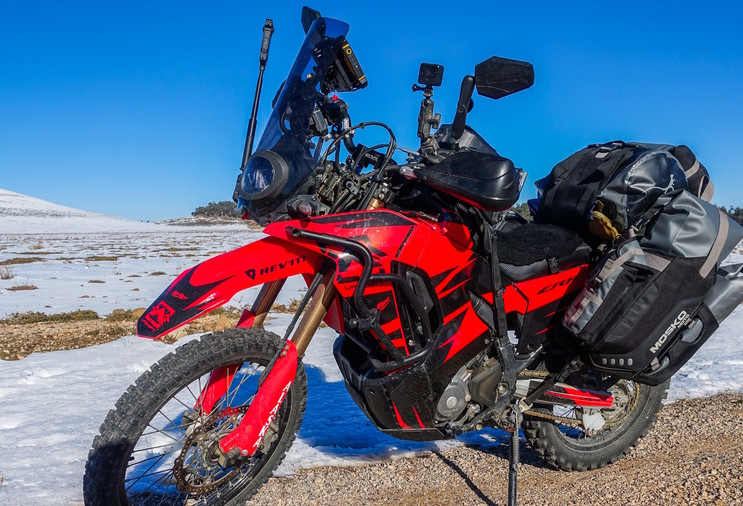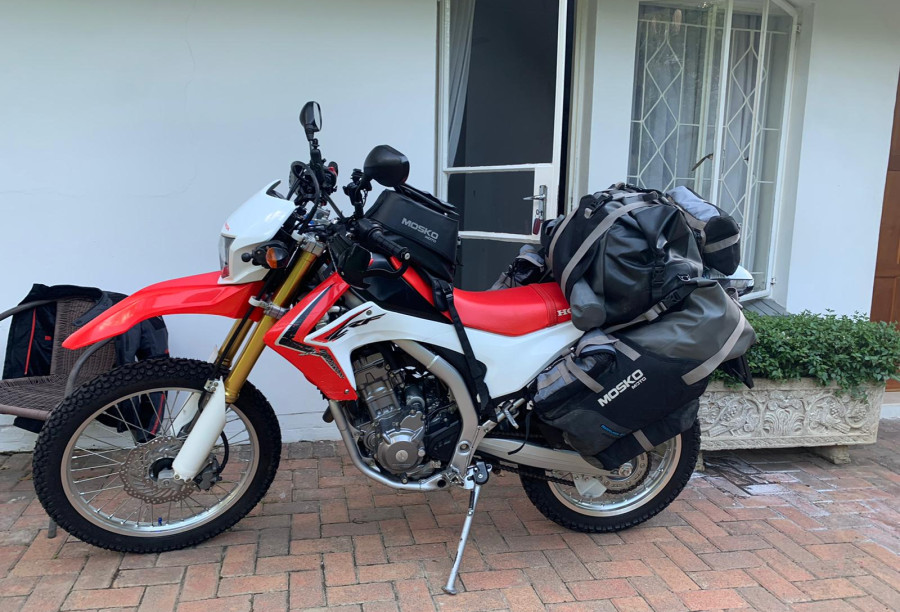
Zimbabwe is a landlocked country in Southern Africa, with Mozambique, South-Africa, Botswana and Zambia as her neighbours. As a country, Zimbabwe is much smaller than Namibia and Botswana, but also more densely populated. Even though 15 million people are living here, you can still find vast areas teeming with wildlife.
Estimates are that 100,000 wild elephants roam in Zimbabwe, which means it has the second biggest elephant population in Africa, after Botswana. Safaris in parks like Hwange National Park and Mana Pools, close to the Zambezi river, are highlights for any visitor to Zimbabwe. But when you are touring Zimbabwe on an adventure motorcycle, you are not allowed into these National Parks.
So, what else is there to see and do as an ADV rider? In this blog I’ll share 5 other must-see and must-do things in Zimbabwe, which can be done on a motorcycle.
1. Rock paintings in Matobo
About 35 kilometers South of Zimbabwe's second largest city, Bulawayo, lies Matobo National Park. This stunning area has the highest concentration of leopards in the world and thousands of rock paintings have been discovered in the many caves of Matobo National Park. Of course, I couldn't enter the park, but luckily there are tonnes of small dirt roads just on the outside of the park.
When exploring these dirt roads, you will pass small villages and ride in between the granite outcrops and hills that are scattered throughout the area. Some of the San rock paintings are also accessible from the public road and I visited the Gulabbagh Cave.
You will find the Gulabbagh Cave when following Criterion Road for 57 kilometers after leaving the city of Bulawayo. Off road enthusiasts will appreciate this route for more than just the paintings, as it is narrow, rocky, windy and it cuts through beautiful scenery.
Interesting fact: the names of the hills in this region are mainly in languages no longer spoken, namely, archaic Karanga and Silozwi. The name Gulabaghwe literally means ‘Large Cave’.
2. Visit the dark caves of Chinhoyi
A few kilometers outside the town of Chinhoyi, west of the capital city Harare, you will find a spectacular cave system. As you descend through the limestone tunnel, you can feel the temperature dropping and the air starts to smell damp. The cobalt blue coloured water at the bottom of the cave has such an unique and intense colour that it almost looks unnatural!
The part of the cave that you can visit, is in fact only a fraction of the whole cave system. Scuba divers have gone down to investigate the depth of the pool, and have gotten about 100 meters deep into the system, but the tunnel system extends much further than that.
The traditional name for the Caves is Chirorodziva, which means the “Pool of the Fallen”. This name stems from an event in the 1830s when the aggressive Angoni Tribe swept into the region, murdering many local people. Their bodies were then thrown into the cave. At least that is what I have been told. This violent history is in large contrast to the quiet and serene place it is nowadays.
Although, the shrieking of the bats gave me the feeling of being in a bit of an eerie place. Nevertheless, the incredible colour of the water and the extent of the cave system is well worth the visit!
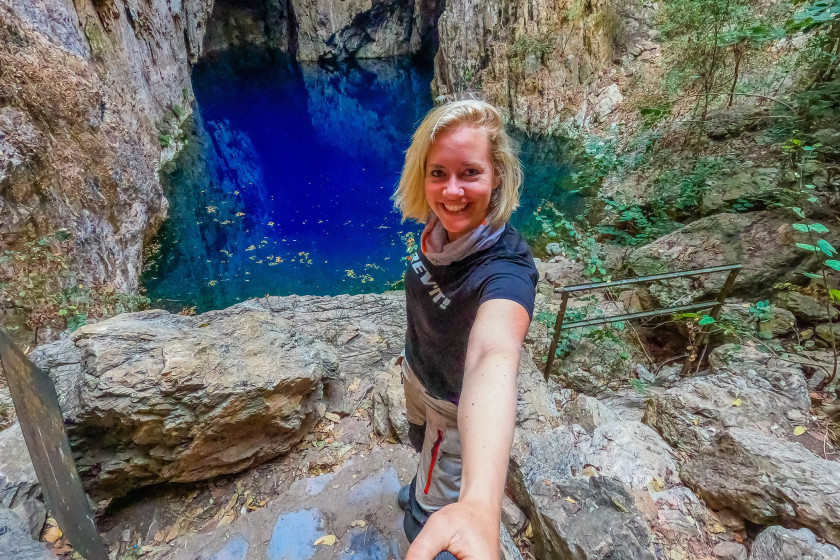
3. Try some Mopane Worms
Mopane worms are a very popular dish in Zimbabwe, and in the neighboring countries. In the rural areas, they are part of the normal diet because of their high protein content. Mopane worms, it is said, contain three times the amount of protein found in beef. It is also said that as a food source, they are less taxing for the environment than cows. According to Wikipedia, three kilograms of mopane leaves will be needed for yielding one kilogram of mopane worms. In contrast, cattle farming requires ten kilograms of feed to generate one kilogram of beef.
Even though everybody talks about worms, they are in fact not worms but larves from the emperor moth! They simply call it a mopane worm because it eats the leaves of mopane trees after hatching. The worm harvesting season is between November and January during the rain season. Sometimes, if the rains are good, there is a second harvesting moment in April and May.
Because it wasn’t mopane season when I visited Zimbabwe, I bought some dried ones at a local shop. The common way to prepare them is to first boil them, then wash them and then fry them in a pan. I have to admit that I could only get one mopane worm down. They do have quite a particular taste, which I actually didn’t mind, but they require lots of chewing. And while I was chewing the worm, my mind was saying: 'I am eating a caterpillar! I am eating a caterpillar!' So unfortunately I couldn’t eat the entire plate of this nutritious food, but I recommend everybody visiting Zimbabwe to at least give it a try!
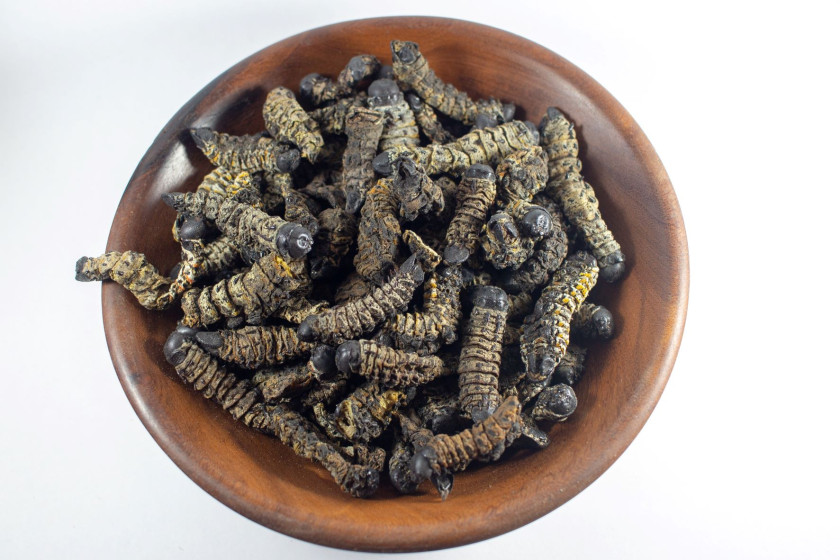
4. Find the money rock
On each Zimbabwean dollar note, you will find an image of three rocks stacked on top of each other. The image with these three stones was chosen as a metaphor for the development and environmental protection activities that have been executed after Zimbabwe gained its independence. They represent a perfect natural balance.
These rocks really exist and the actual rocks on the bank note can be found in a national park just outside Zimbabwe’s capital, close to township Epworth. Here you can find many more balancing rock formations. It’s fascinating to see these rock formations which are all natural phenomenons. Even though it truly looks like someone somehow put them on top of each other.
Interesting fact: Don’t come to Zimbabwe without US dollars in cash. Cash is hard to come by in this country and everybody tries to get their hands on US dollars. But even if you pay in US dollars, you’ll often receive Zimbabwean dollars in spare change, which is linked to the US dollar.
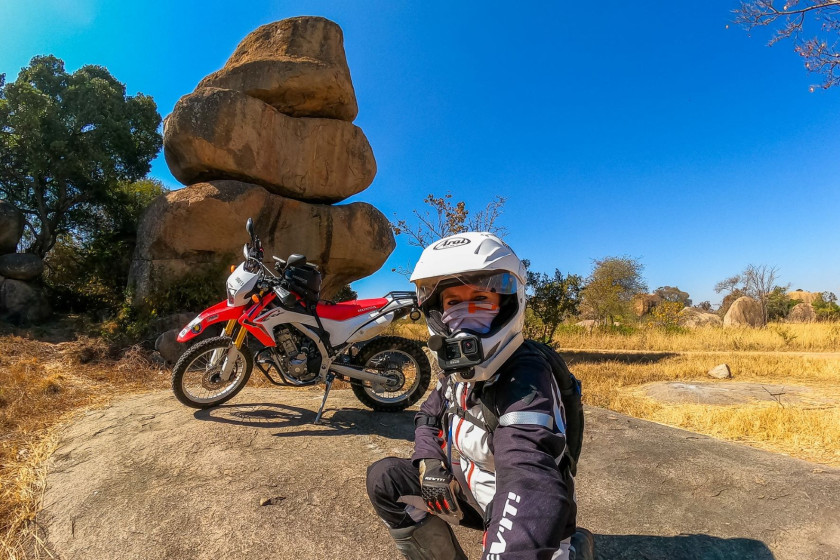
5. Chimanimani mountains
Possibly the best adventure riding in Zimbabwe can be found in the eastern part of the country, right at the border with Mozambique. This area is called the eastern highlands and runs for about 300 kilometres from north to south. It’s cooler and wetter here than in the rest of the Zimbabwe, and you can find here some moist evergreen forests. There are three main mountain groups in this area: the Nyanga, Vumba and Chimanimani mountains.
I rode through all three areas and it’s hard to pinpoint which mountains were the best! I visited the Honda Valley which lies in the Nyanga mountain area and is famous for its rolling green hills with tea plantations. Many of the roads on the northern side of Honda Valley don’t see a lot of traffic and I found some fantastic off-roading tracks.
Around the Vumba Mountains, just south of Mutare, you will ride through thick forests and over muddy tracks, especially after is has rained it becomes very challenging terrain!
The Chimanimani mountains are probably the most spectacular, as the ragged peaks of this mountain range can be seen from far. There are tonnes of dirt roads in this area to explore and the only other traffic you will encounter are trucks. This area is also Zimbabwe’s main wood plantation area so you will definitely encounter some of those large logging trucks here.
What I found special about the eastern highlands, besides the awesome riding opportunities, were the locals that greeted me everywhere I went. The people in Zimbabwe in general are friendly and I’ve been treated kindly everywhere I went. But in the mountains, the people were even more enthusiastic and happy to greet anyone brave enough to ride these roads!
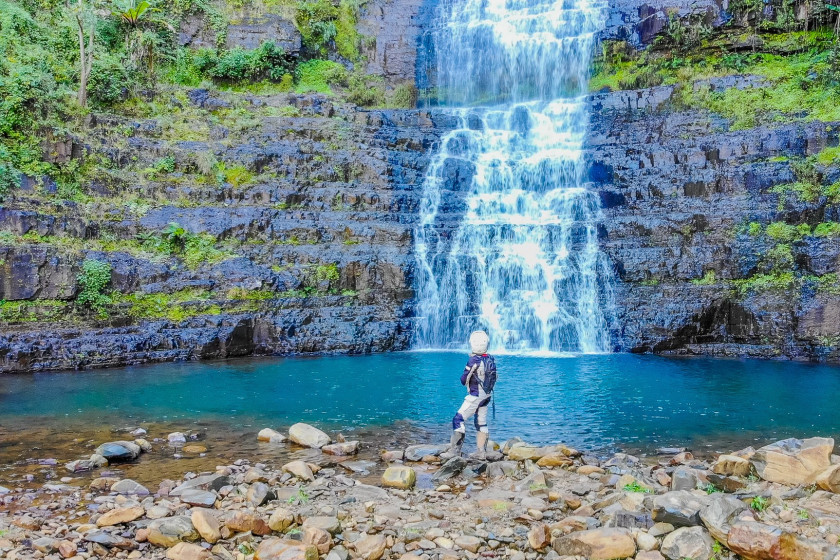
More not-to-miss in Zimbabwe
These were my 5 not-to-miss in Zimbabwe. I am certain there are many more things to see and discover here, so don’t hesitate to add some of your Zimbabwean favorites in the comments down below!

Hi Noraly
Having been born in Zimbabwe this is what got me hocked on your travels. It was so nice to see places that you went to that I grew up at. Being at school in Chinhoyi we used to swim in the caves. Watching you in the Kalahari rally brought back memorys, seeing people I now. Joe Holmes who I rode with . Keep up the good work and safe riding.
Noraly,
I always enjoy the blogs and videos looking forward to seeing the Kalahari rally footage,and congrats on finishing
Your attitude and fortitude are to be applauded and copied for sure
Cant wait to see what you do next!
Be safe
Brian

Thank you all for your compliments!

Hello Noraly,
I'm Your great fan, really! Your lifestyle is such unusual, and adventures are amazing. I admire your courage and I'm looking forward to report from Your Kalahari's race! I believe Savannah will do very well. Good luck and keep following Your dreams!
Hi from Canada!
I am absolutely blown away by your bravery, tenacity and adventuresome spirit. Of course, one can expect that from a Dutch girl . (My lineage is also Dutch 😁).
I just wanted to thank you for inspiring me to set out on my next moto-adventure.
Wishing you continued happiness and many more years of adventures.
Maybe we will bump into each other one day.
Dag!

Now that at least the adventure part of Season 5 has come to an end, I would like to say thank you for sharing your travelling adventures with the world. It was a really wonderful and very interesting time in the past 7 months and I look forward to exciting rally episodes. Keep on!
Thomas
I admire the work you put into keeping your followers up to date with the blog, the videos and notes. It is a really big workload organising these things when on a motorcycle trip. The editing and writing can always be at the back of one's mind. You really have a full time job! I, and clearly others, appreciate the work you put in and the quality of the finished products. Thankyou very much.
After reading your message on "something big is about to happen..." I could'nt resist making a wild guess! YOU are going to take part in a RALLY!! Congratulations; your wish is about to come true. I'm right, yes ?! YAY!...GO ITCHY!!
The calendar picture for October of you changing a rear tube on Dhanno inspired me to replace the worn rear trials tyre on my 1955 R E Bullet.
Working in a garage with the benefit of a hydraulic ramp for wheel removal, I got the old tyre off with a lot of effort, washed the chain, cleaned the inside of the rusty rim with a rotary wire brush and got the replacement tyre half on before being halted.....couldn't get the valve back through the rim. 2.5 hours so far.
Time for a cup of tea and resume tomorrow; my dear wife has offered to try with her smaller hands.
So hats off to you, Noraly, for your expertise, I look forward to feeling your sense of achievement when it's done and can only reflect how different it must be doing it trackside in the bush.
Best wishes,
Michael Smith UK
Really enjoyed your email Noraly. You also have a natural wordsmithing talent also. When you post on the comments of your most recent video, I know you are OK. Out of on line contact when you were in the "Stans" was worrysome.
The surprises you share with us keep me excited (how could I not be) for every new episode.
Don't forget to take time off and recharge you soul and body.
Looking forward to your nest live chat also. (it already made it to Minus 2.1 C so stay warm and enjoy the sun) Mike


